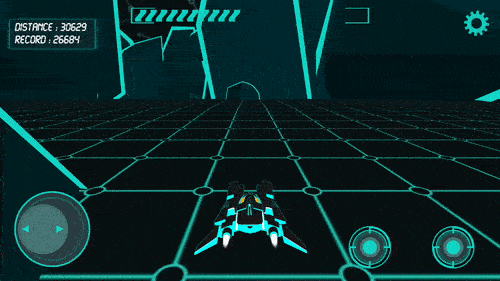A game you learn how to create in a one day training session focused on kids.
One day to learn how to code your game with Unity3D
Here was the tagline that gave birth to this game. During the process of creating our new training sessions opened to the public, we chose to create some customisable assets and to have a simple yet interesting game we can use to teach to kids how to develop their own game within a day and take it back with them.
Opened to the public sessions?
We already had a training program for pros, teaching modules focused to video games developers that don’t know Unity yet and want to use it. The modules were selected according to their needs: basics, 3D physics, animations, 2D physics, mobile optimisation (iOS/Android), editor tools, etc. I also began to teach in video games schools during that time, thanks to Carole Faure who trusted me on that. Many thanks to the students who were kind enough to work during my sessions.
Then, during a video games festival in Bordeaux (called Animasia as there was also japan culture etc), we observed that a lot of young players wanted to know how to develop a game, even if it was a hobby. We told ourselves that it could be interesting to create a simple and low cost offer for them to have this possibility to learn but without going to a full year school and giving a lot of money. The fee was 50€ for the full day, going up to 100€ if they wanted a second -harder- day of teaching lessons.
We made the effort of creating a new game that we could include in our white-brand games catalog, meaning that each visual asset can be changed at low cost, and it also could be used in the onboarding of a new member of our crew. It was the perfect timing and allowed him to gain skills.
At the end, we took advantage of the next Animasia festival to create a tournament with this game to test it and get first training apprentices.
A 3D runner, but with a curvy world
Two things we wanted to add and test at the same time were:
- use patterns for level generation,
- have a real worl 3D effect without the need of a huge sphere.
The solution we used was to create patterns that take place on the quarter of a cylinder and estimate the origin point of dynamic objects (like meteorites, spikes that goes up from the floor, etc) along that cylinder. By always having a quarter of cylinder in advance, you always have the impression that you turn around a 3D huge world. We also had the choice, and we tested it, to use a shader to simulate the world curvature, but that did not bring the same challenge, and more importantly: no way we could teach how to develop a runner AND how to code a shader the same day with rookies! At least, we thought we could not handle it.
If you watch that video, you will see that the first release of the game included a day and night light cycle, which was fun, but lead to many troubles visually so we removed it.
Free 2 Play!
No, it’s not an insult: especially when you have a white-brand games catalog. So, we continued on our way and included in this game, like many others afterwards, a free to play mechanic: the consumable items. In this game, this is very very basic: you get energy while you run, and use one bar of energy when starting a new ride. You have to ride far enough to be able to start another game, or you have to watch an advertising video to get energy instead.
Credits
- Coding: Benoit Constantin, Guillaume Thorel
- 3D models and animations: Stéphane Landry
- 2D graphisms: Coralie Sanchez



